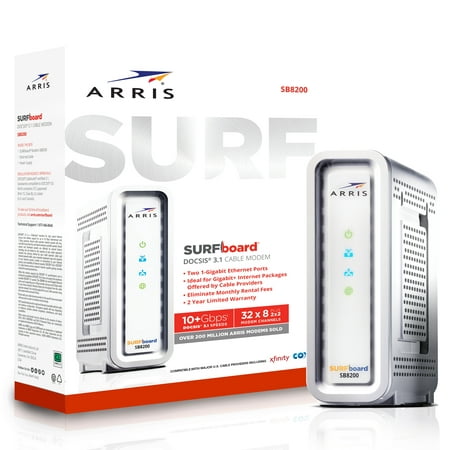ARRIS SURFboard DOCSIS 3.1 Gigabit Cable Modem, Approved for Cox, Xfinity, Spectrum & others
Introducing the first DOCSIS 3.1 cable modem in the SURFboard lineup. The SURFboard SB8200 is a DOCSIS 3.1 modem — the newest technology being offered by cable providers. It is perfect for things like 4K Ultra-HD video streaming and Virtual Reality gaming. Plus, it has two Gigabit Ethernet ports! Today’s connected home demands speeds far more powerful than ever. Power your home network with the SB8200 and get the fastest speeds and most reliable connection to the Internet. Own yours today and stop paying rental fees.





SURFboard DOCSIS 3.1 32×8 Cable Modem:Capable of the fastest download speeds available from cable providersDOCSIS 3.1 cable modem — the newest technology being offered by cable providers32-download x 8-upload channelsPerfect for 4K Ultra HD video streaming and virtual reality gamingIdeal for Gigabit+ speed packages offered by cable providers2 x Gigabit Ethernet portsSupports IPv4 and IPv6 internet browsing standards





Reviews
There are no reviews yet.